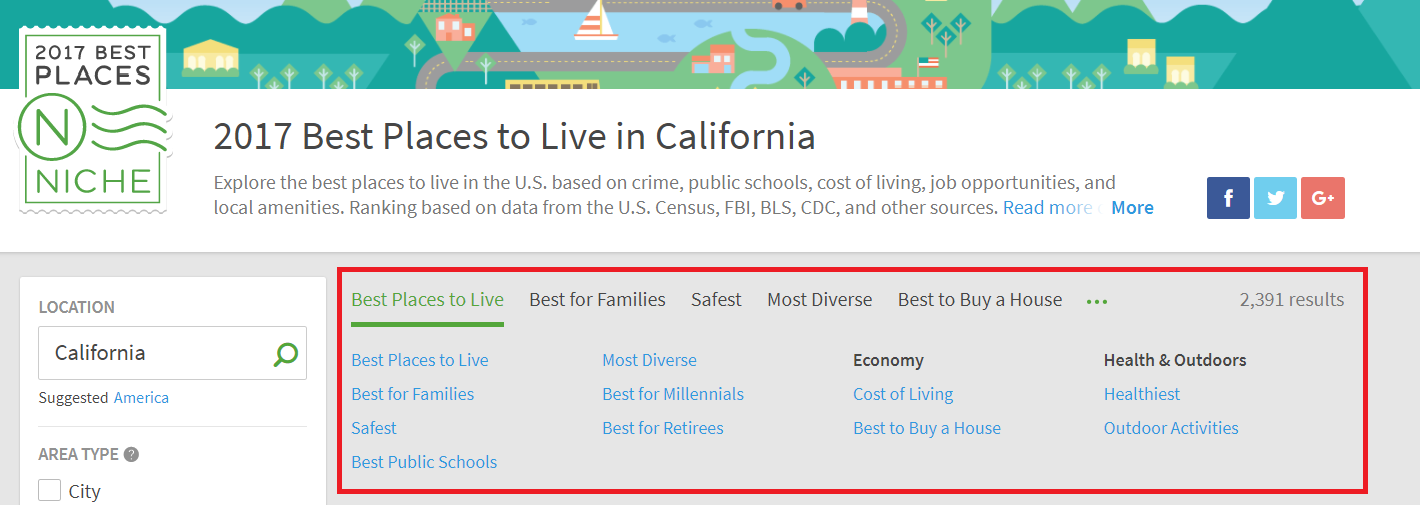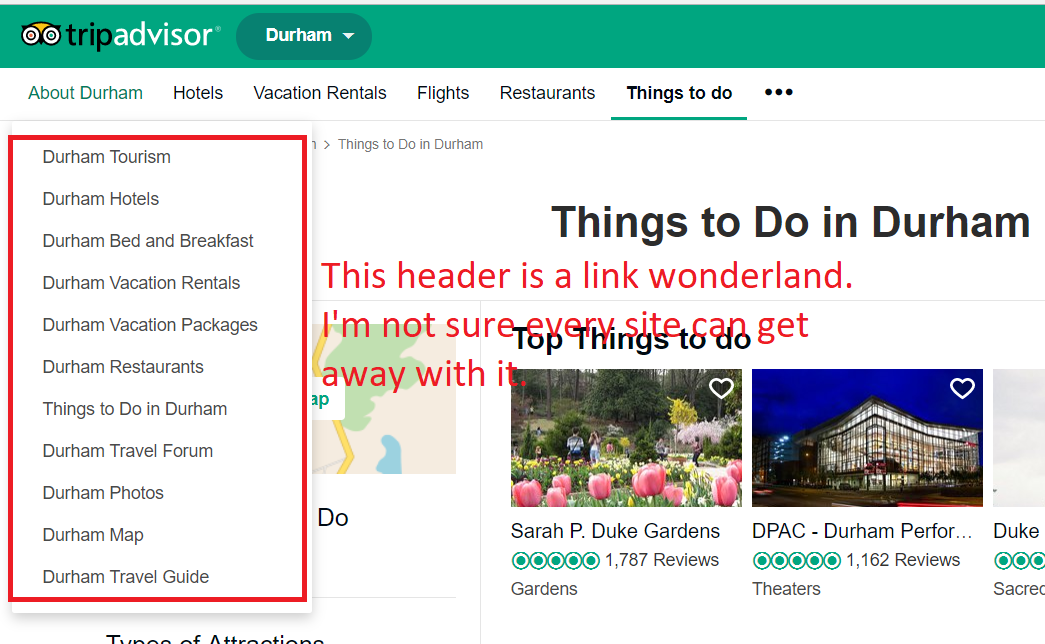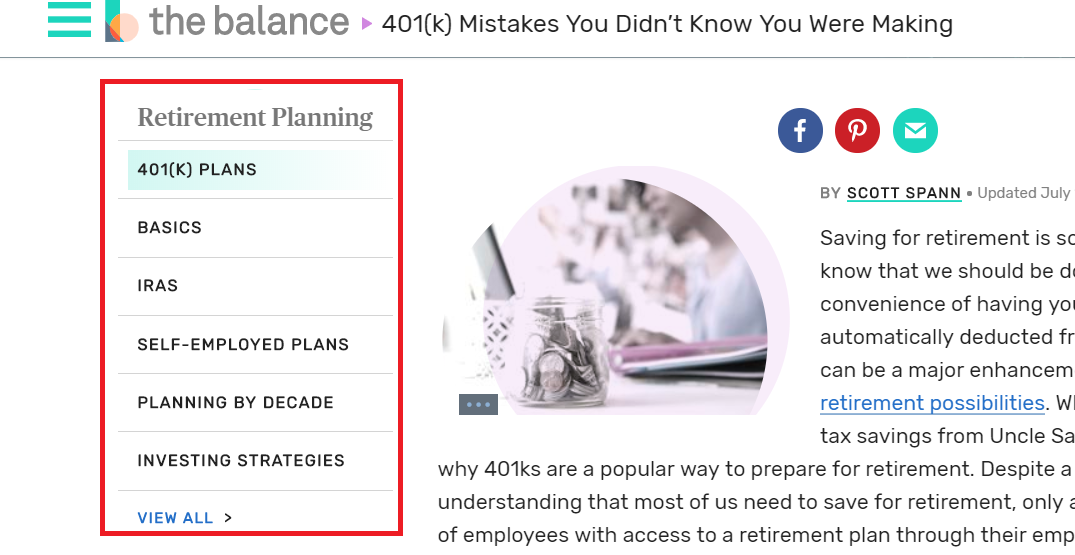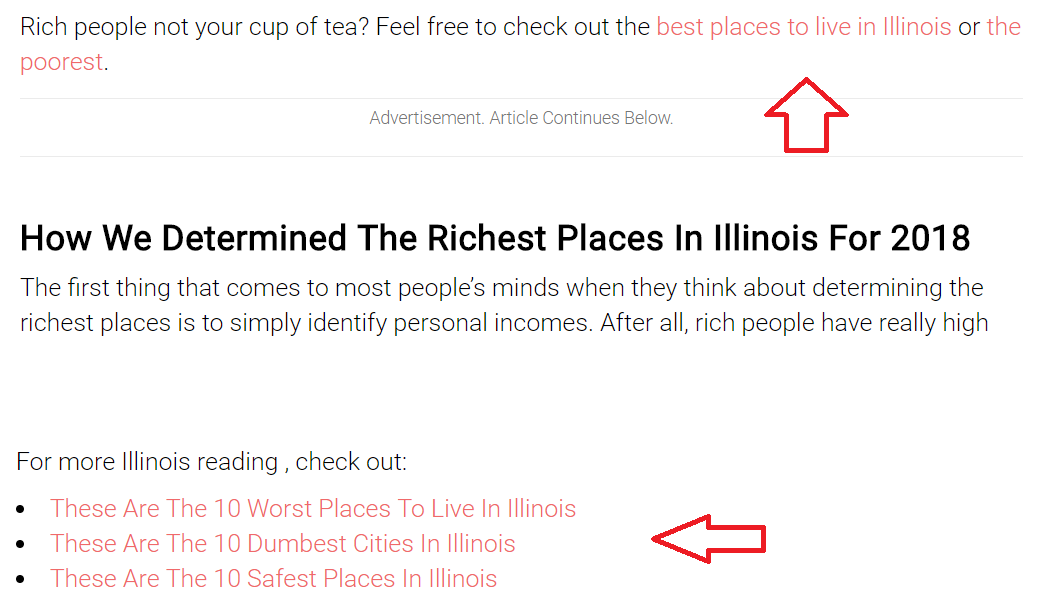The Power Of Linking Related Content Together
How creating content clusters improves site engagement and organic traffic.
One of my favorite parts of SEO is that everyone has their strategy out in the open to some extent. Sure, off site tactics are harder to spot and sites go through some hoops to prevent you from seeing what their doing.
But here's the thing:
You can take advantage of what successful SEO companies are doing on page real easily. For example, just look for trends across Niche, TripAdvisor, and TheBalance (About.com). If each of these companies is doing the same thing, you should do it too.
In this case, you can take a look at how each company integrates related content onto each page:



This isn't mind blowing, but actually doing these simple things, and doing them well at scale, has an outsized impact on performance.
It's my experience that a ton of people read this stuff and then fail to act on it.
Because it's hard!
We have a 40% increase in organic traffic from implementing these best practices this year, but it took us three years to be able to do it.
Why executing simple ideas well is not easy
One of my coworkers was making fun of me the other day saying "this is obvious why didn't you do it earlier?"
Here's what I told him:
- The impact wasn't obvious three years ago! And even when the impact was obvious, it still took a month of working every night to get all the pieces in place.
- We didn't have the related content earlier. My initial algorithm three years ago had to deal with states that had 0 other articles written about them. Building a library takes time.
- Our processes were too manual. It would have been hours of copying and pasting.
The common theme through all three parts of that response are the time it takes to do implement good changes and the need for automation.
The nice thing about having a side project where I'm the coder, SEO, and content strategist: perfect communication. Imagine if you had to go across 2 or 3 departments to get everything on the same page.
The Results For The Effort
I mentioned earlier that we had a 40% increase in organic traffic.
Well, here's the graph of what happened when we did it for HomeSnacks across our richest cities in each state articles:

I know there's a lot going on in that graph. Bare with me.
It looks at year over year comparisons in organic traffic and bounce rates. You can see the date we made the change to the pages in late 2017 (the red line) to boost the number of related articles we link to in the content:

We aren't going to win any Webby awards for design, but it's super straightforward for users.
We ended up seeing lower bounce rates, more engagement with the site in general, and the formation of topic clusters. Which all lead to the higher rankings and increased traffic.